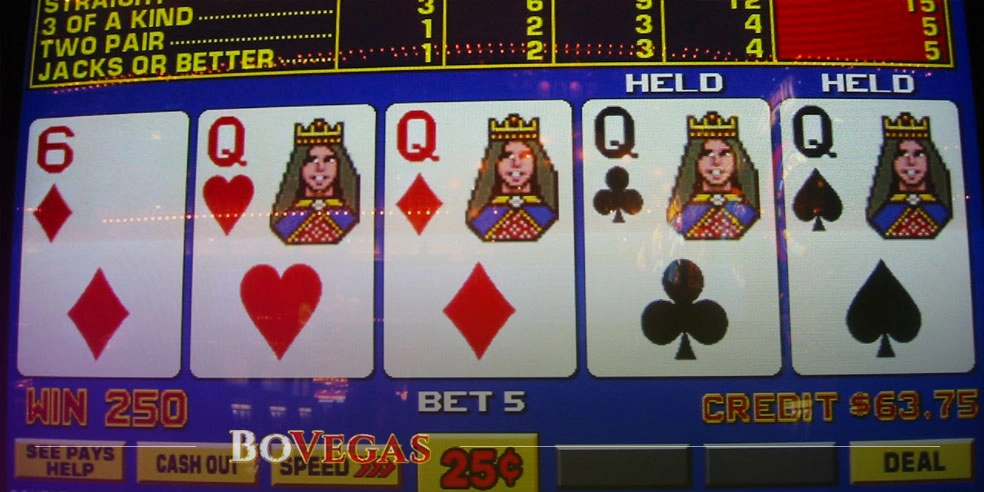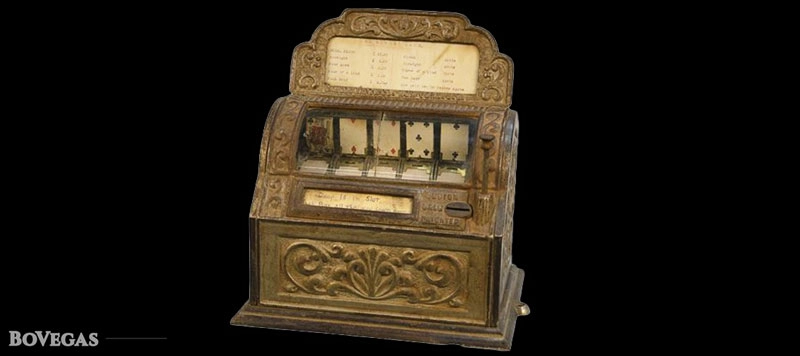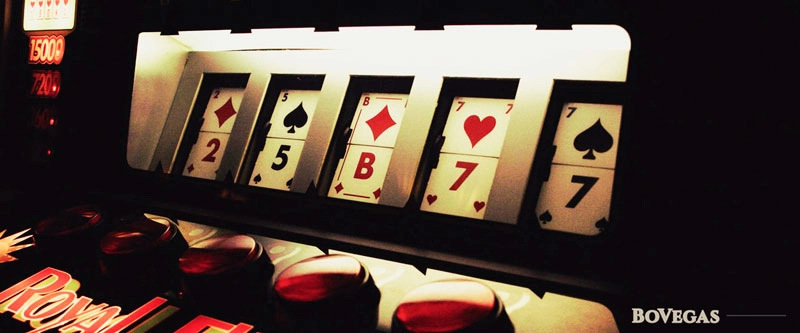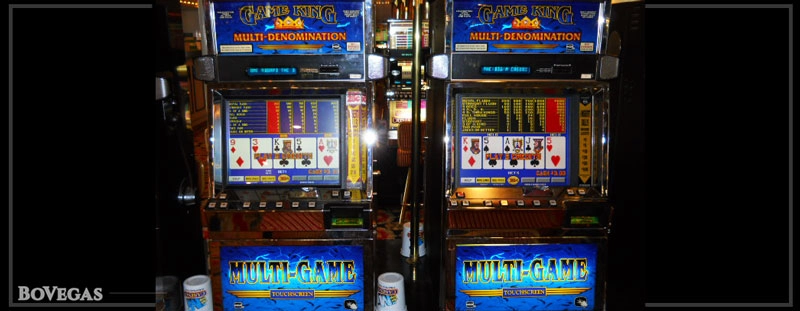



Video poker is easily distinguishable from other “electronic” games. As it’s quite a simple game to play, it might appear to resemble slots; but the substantial difference is that in video poker, the player can decide how many and which cards to keep before the final hand is drawn. Hence, video poker is a game requiring smart decision-making, rather than being a matter of random button-bashing. And, of course, to make the right decision, the player needs to have the proper skills.
But this game is very different from poker, too — because here, you aren’t competing with other player(s). You play your game alone. This can be really important for some people who prefer exactly this kind of gaming activity. Here we are not going to dwell any more on the subject of why creative introverts might prefer to play alone, and how many of them love to play video poker. The focus of this article is different — the history of video poker is related to its most important principles and gameplay features.
Why is this topic important for the gaming community? Just because video poker is the lowest house edge game among all the other casino games played online. And if you want to win, you really need to understand this popular game, with its many important nuances.
It was in 1891 when the game was launched — and may this not surprise you, as there was no such thing as “video” back then. Indeed, the name “video poker” came to the scene much later; but the game introduced by Sittman and Pitt Company from Brooklyn, New York, in 1891 was the first close attempt.
All they did was to invent the first poker machine; well that’s a start, right?! The player inserts a coin, pulls a lever, and five reels, each of them containing the images of 10 cards, begin to spin. Then the reels stop in random positions, each of these going to form a poker hand.
But wasn’t it just a slot machine, you might ask? Yes, this machine was indeed a predecessor of slots and video poker; but as it did use actual poker hands for the payouts, it was a genuine poker machine. The famous Liberty Bell slot machines were introduced soon afterward, invented by Charles Fey in 1894. These only had three reels and were generally simpler; not like the poker-related tables of today, with their combinations of winning symbols.

At that time, the players had no influence on the game outcome after the coin was inserted and the lever pulled. This revolutionary change to poker machines was introduced in 1901: the players were granted a “hold” feature. Charles Fey created “Skill Draw” machine (yes, skill again) at which the players could hold some card and re-spin the reels; or the drums, as they were called back then, trying to improve the hand. Sounds just like a real 5-card draw poker machine, doesn’t it?
There still was some time ahead to add “video” to the name, but that was a game where some skill or at least knowledge of poker hands were needed. The win no longer depended on pure luck.
At the beginning of the twentieth century, the basic limitation of poker machines was the number of cards the equipment manufacturers were able to place on a single drum. There were 50 cards, rather than 52; the Jack of Hearts and the Ten of Spades were excluded. This led to a 50% lower chance of hitting a Royal Flush.
But as the game of poker was very popular at that time, machines for playing poker were widely and warmly welcomed by the public and by gambling venues. And not only venues either! Because it was also possible to see their machines in many bars across the USA, not to mention liquor and tobacco shops all around the country. And the anti-gambling legislation of the period was not a big problem: the prizes were paid out either as cigarettes, cigars, or drinks!
Those who knew how to draw strong poker hands were winning quite a lot; but since the profits of the liquor or tobacco shops were not coming from the house edge of the game machines but mainly from sales, it was not a big problem for such shops if the players were winning. The influx of customers was exactly what they were looking for, and so they got exactly what they wanted! So poker machines were clearly very popular way back then.
And even though the Prohibition era changed this, tobacco retail shops still had these machines, and many players gathered around them indoors.
It took about 70 years to go from the “Skill Draw” poker machine to the first video poker machine, which was launched by Dale Electronics Corporation in 1970. The new machines were called “Poker-Matic,” and they combined a TV monitor with a solid state central processor.
Though fairly primitive by today’s standards, these machines were very advanced back then. They should have been an immediate and great success — but this didn’t actually happen in the end, although many casinos had already been ordering and installing the novelty units. Perhaps the reason for this is that gamers are a very specific group of customers. They like novelties; but at the same time, they are still suspicious of them. Back then, they did not trust the new video poker machines, as they were unable to see the mechanical drums spinning and hear those old familiar sounds…
However, people’s attitudes did change over time. This, after all, was supposed to be a characteristic feature of the target group. What good marketing needs to achieve, above all things, is the ability to influence people’s tastes over time. Slowly but surely, the once bizarre idea of playing on a screen or monitor triumphed over existing prejudices and stereotypes. Screens and monitors were coming into vogue. The computer era had finally begun. Everything electronic and computerized was gaining ground in every sphere of life. It is difficult to say whether or not gaming was the key engine of this major shift, but it surely contributed to the final success of all those exciting screen-based technologies.
There are just so many stories about great inventions and business ideas that were initially rejected by those who were supposed to be able to see the potential of such innovations immediately! And believe it or not, such short-sightedness among the very business sharks and analysts who (in theory!), should have been the very best experts in the field, is very common. Even though this always turns out to be a very costly mistake, this kind of story just keeps coming up all the time.
Most people have seen an electronic wristwatch before, with its quartz crystal controlled oscillator. But it might surprise you to learn it was actually rejected by Swiss watch manufacturers! Also, IBM and General Electric ignored the idea of making a photocopying machine. Even Napoleon is said to have had rejected the very idea of equipping French naval ships with steam engines… And of course, the very same thing happened to the new video poker machines developed by Si Redd. In the 1970s, he had proposed his idea to his bosses at Bally’s Gaming, a company which had been involved in the distribution of gaming machines.
The bosses said that their core business was slot machines, and there was no need to develop video poker. Just another in a long line of costly mistakes from business experts! Si Redd patented his innovations and called the machine he was about to introduce to the market a “video poker machine.” He found Si Redd Coin Machines (SIRCOMA, which later evolved into International Game Technology or IGT) and has been successfully developing this business ever since.
IGT has been very responsive to the needs of their customers, understanding that people play video poker because they want to win using their skills — otherwise, they would have played slots where no skills were needed! So this is why the gameplay of video poker has seen many different changes in its long process of evolution.
Besides, the odds have always been a pretty important thing! And sad to say, in the early versions, the lowest winning hand was two pairs; this was clearly a bit too high. So after this, IGT decided to lower the threshold and make the lowest winning hand just a pair of jacks. The “jacks or better” version immediately increased the popularity of the machines. This decision lowered the house edge. But was the game still profitable for the venues?
In the 1980s, when the popularity of video poker machines was already growing rapidly, the casinos were cautious about the fact that many players were able to win real money because of their playing skills. The math needed to calculate the house edge, or “the hold,” as it is called in slots and video poker; but this is a really complicated task for video poker machines. Technologically speaking, there was the only way for the casinos to find out whether the video poker novelty was going to generate money: an experiment modeling the performance!
So this is how it worked: several machines were installed in separate premises. People were hired to play on these machines for a week or two. The results were collected, calculated, and analyzed.
This painstaking way of obtaining house edge data might seem pretty strange to people nowadays; nevertheless, that is exactly how it was done back in the 1980s.
But, in fact, the problem of the video poker house edge is not an easy one to solve. It is neither a slot nor a roulette game; in both cases, the probability of the game result calculated against the payouts tells you how much the house gains on the average. In video poker, the factor of the player’s individual skill is essential. This is why the mathematical modeling and very complicated computer simulations of the hand outcome and the payout are really necessary parts of the game; as the machines do need to take into account the best strategy a player could use for every possible combination of cards. In theory, the house edge of the video poker game is “near zero” — about 0.25% or even less. In practice, of course, not every player makes the best possible decision; so that does move the house edge up.
During the past two or three decades, many novelties and adjustments have been introduced. Nowadays, there are many versions of video poker. The games have become more entertaining and more interesting to play; but all these small changes are mostly related to the fact that the casinos wanted the game to generate more revenue. But video poker still remains the game of the lowest house edge — provided the player makes no mistakes.
A huge step ahead in the development of the game was making video poker available online. Since 1994, after Microgaming had introduced their first online version of the game, the growth and diversification of video poker became truly exponential. Nowadays, it is not a single game but a whole family, or rather a clan of games; and of course, in global terms, it is also one of the most frequently played ones out there!
For example, there’s Deuces Wild video poker, where the Two serves as a wild card; and Joker’s Wild, where this role is given to Joker. There is also Anything Wild version, where the player can decide what card will be wild before the cards are dealt. Other versions include multi-play poker, progressive jackpot, etc., etc.
Several hundred different variations are available. The players can choose the exact one they want, but the original Si Redd’s “jacks or better” version still remains the most popular version of video poker!

A lot of time has passed since the establishment of the first land-based casino. Naturally, the gambling industry itself has transformed tremendously, as various new technologies and developments such as better internet connection, cryptocurrency, gambling tools, etc. appeared. In this article, we’re going to take a closer look at major gambling trends, which is about […]
Posh casinos and luxury hotels are the very heart and soul of Sin City. Vibes of joy and excitement hover over the streets and seep into the very pores of the tourists and professional cardsharps visiting Las Vegas. There is just so much to do here, from trying your luck at table games to going […]
Nowadays, the UK is known to be a country with some of the most effective gambling regulations in the world. The UK Gambling Commission keeps a wary eye on any operators that have been licensed to offer their services within the country. However, this doesn’t mean that gaming in the UK is going through a […]
The romanticized image of the dealer, both in real life and in countless movies about casinos and gambling, has always been shrouded in an aura of mystery. And is he a successful guy? You bet! In fact, we could go so far as to say that this person is almost the right-hand man of Lady […]
If you love gambling and have been to a land-based casino at least once, you may have thought about becoming a dealer. Playing the same game but from the opposite side, while communicating with other players, sounds like a dream job, right? A dealer is a straightforward job, and you will be the heart and […]
On Monday September 14, MGM announced that it plans to open its first smoke-free casino at the end of September, when Park MGM will finally reopen its venues to players and tourists. The resort comprises around 2,990 rooms and various restaurants, and it’s set to be reopened on September 30. The venue has been closed […]
Online gambling has undoubtedly taken a place of true supremacy over the casino industry during the pandemic. And the reason for that is quite clear: online casinos are more accessible, and you can always count on some encouragement from the casino administration to help you boost your game. However, this digital revolution has only been […]
The large selection of online gambling sites out there can make players somewhat puzzled, and give them a feeling of uncertainty about making the right choice of casino. Each online gambling venue offers its own conditions, games, and various bonuses, of course; but the most important thing is the reliability of the casino and the […]